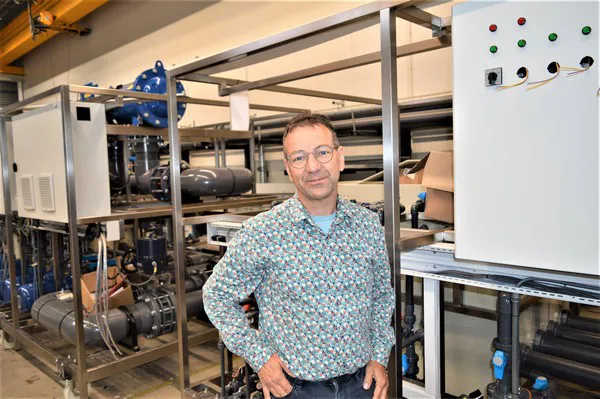The starting point of servitization is that service and maintenance are no longer seen as a cost item. It is an additional revenue model for the grower. It's all about operational reliability. Installers no longer just supply their equipment, they also provide operational reliability. And that benefits the crop.
How does it work?
Installations and equipment are fitted with sensors that detect imminent defects and/or malfunctions by taking measurements. It is now easy to store this data. Analysing this kind of data is a different story. This is still in its infancy.

Stolze is anticipating these developments. Carel van Ruijven is convinced that servitization is the future. He sees plenty of potential examples of devices for which this is profitable.
It would be going a bit far to mention everything here. But just think of LED fittings. By including sensors in the fittings, you can make all kinds of things measurable. Differences and changes in performance will thus become apparent in time. Equipment starts showing defects much earlier than is visible to the naked eye. Action can be taken in time with the help of these sensors.
But a temperature sensor in the fitting would also be a possibility. With this last addition, you have a clear and complete grid of the temperature distribution in the greenhouse and also an extra measurement for monitoring the fixture.
Offering reliability with the help of sensors would also fit in water units, pumps, climate computers, fans and air handling units. "And the list does not end here," smiles Carel.
The bottom line is that service does not stop with the supply of installations. In a maintenance or service contract, agreements can be made about checking and intervening in time to prevent damage and malfunctions.
Spotify
The phenomenon of servitization is not really known to the horticultural sector at the moment. Carel compares it with Spotify: "If you had asked 15 years ago whether there would be a need for online music services, everyone would have shaken their heads. And now? Just look at it, Spotify has become an integral part of our society, hasn't it? The service we are talking about now is similar. But with a big difference: the amount at the bottom of the grower's balance sheet is positively influenced. And that is not unimportant."
As mentioned, Stolze is sorting itself out. People think, talk and brainstorm. Which sensors on which equipment are to be used first? What will the platform look like that will support this? Will we do this ourselves or with partners?
There are still many questions that need to be answered. "It is important to dive into this properly. In any case, the horticultural sector cannot ignore this trend. And, to stay in Spotify terms, this will be music to a grower's ears, I expect," concludes Carel.
For more information:
Carel van Ruijven
Stolze
+31 (0) 174 516 779
[email protected]
www.stolze.nl
